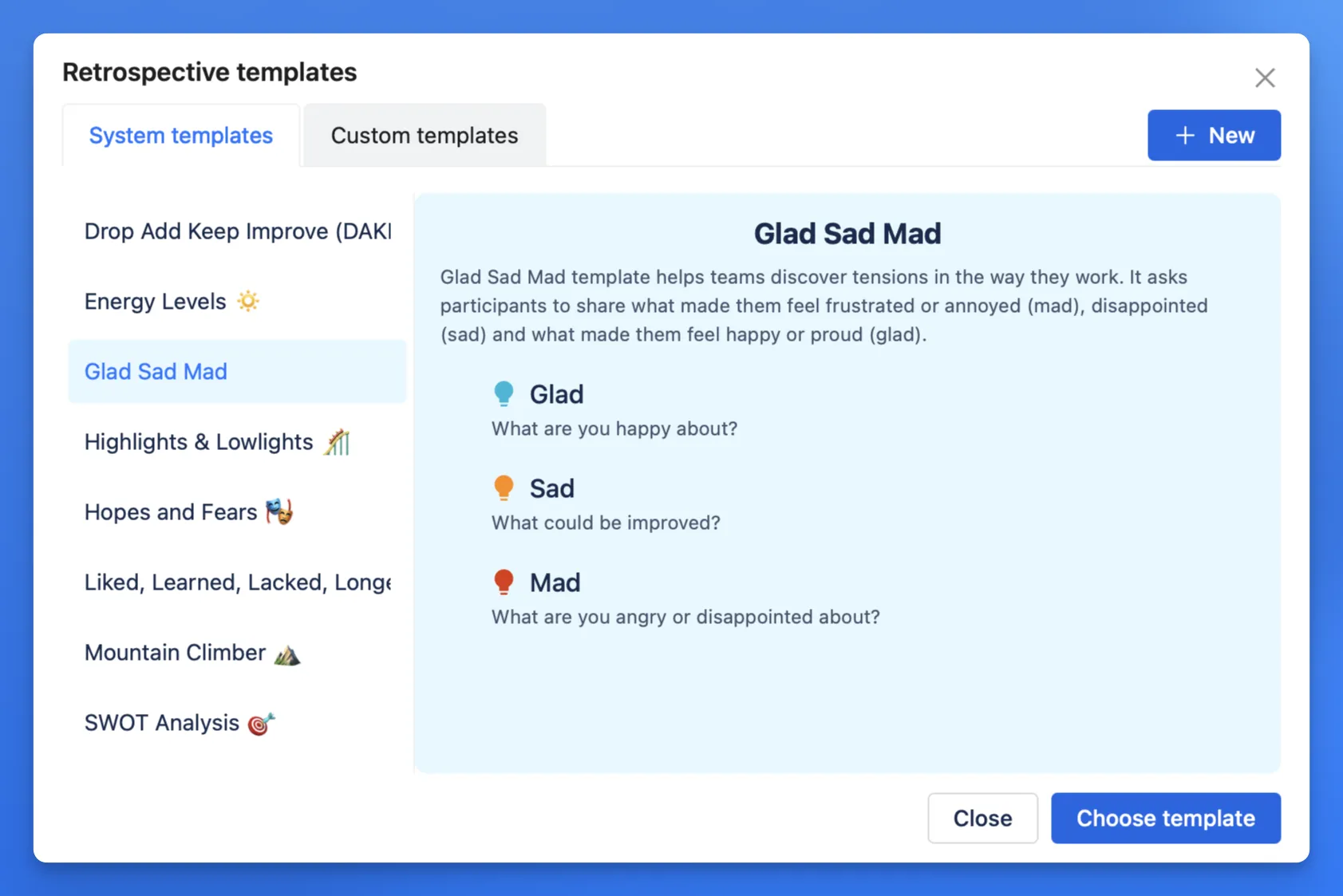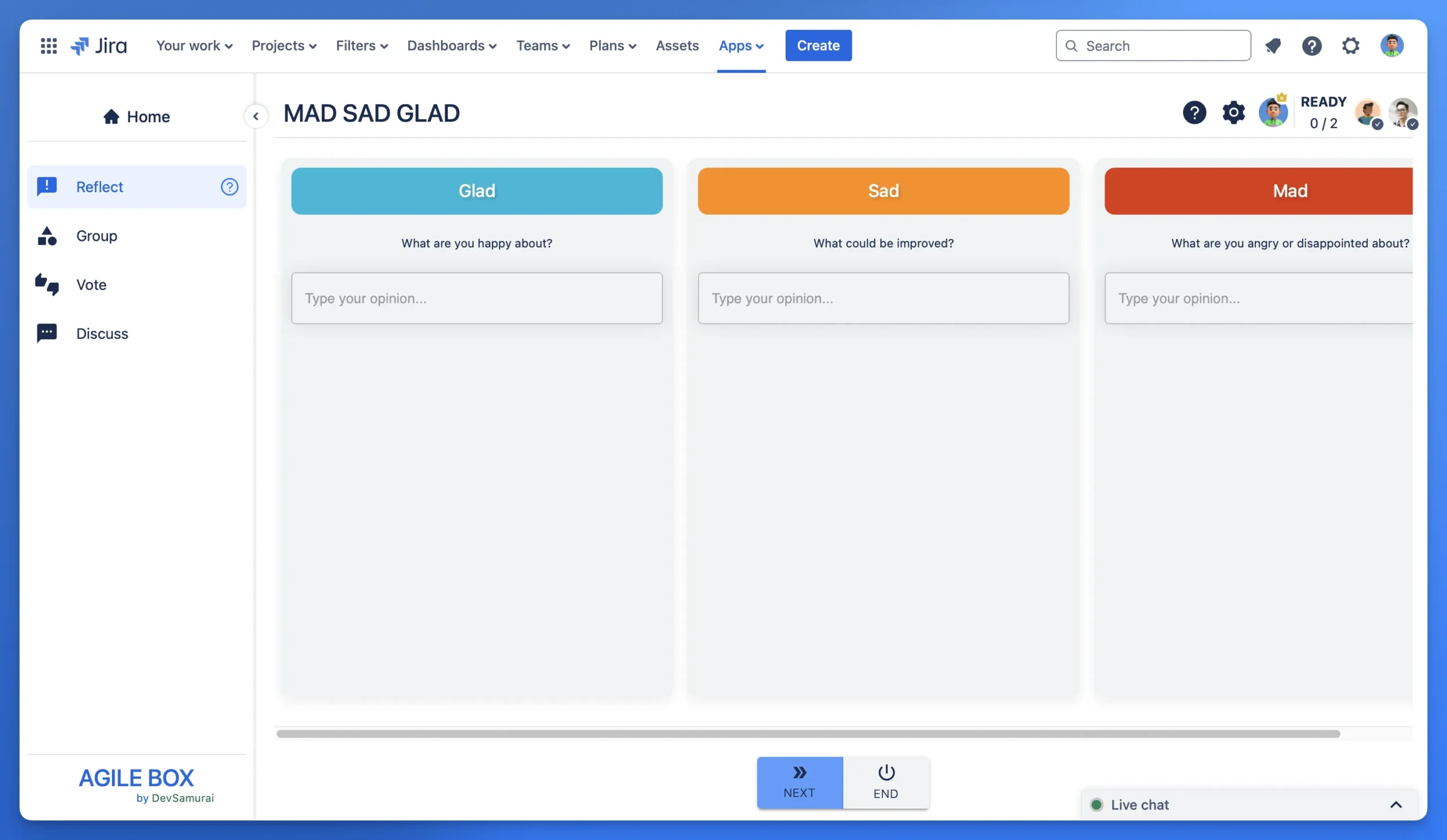Boosting Team Morale with the Mad Sad Glad Retrospective
The Mad Sad Glad retrospective helps teams talk openly about what’s going well and what isn’t. By categorizing feedback into what makes team members feel “mad,” “sad,” or “glad,” everyone has a chance to speak up.
It’s a simple format that gives managers and team members a clear view of where improvements can happen and what practices should be repeated.
What is Mad Sad Glad?
Mad Sad Glad is a structured team meeting where everyone reflects on recent work. Each person shares experiences that fit into three categories: Mad (what caused frustration), Sad (what brought disappointment), and Glad (what felt positive).
This retrospective method lets team members address their concerns and wins directly.
“Mad” often brings up productivity blockers, like late meetings or poor communication, while “Sad” highlights frustrations that make team members feel unsupported. “Glad” then gives space for everyone to appreciate achievements and acknowledge teamwork or other positive outcomes.
The Format of Mad Sad Glad
The Mad Sad Glad retrospective divides feedback into three categories, making it easy for teams to express thoughts about their recent work:
Mad

What are you angry or disappointed about?
Team members list situations that created frustration or stress. These could be unproductive meetings, workflow issues, or anything that added pressure.
The goal is to recognize what needs to change so team members can focus on their tasks without added tension. Managers often use this feedback to make practical adjustments.
Sad

What could be improved?
Here, people talk about disappointments or situations that lowered their morale. This category may include missed goals, lack of support, or other experiences that didn’t meet expectations.
Sharing these moments helps the team understand what’s causing low spirits and gives managers insight into improving team support and resources.
Glad

What are you happy about?
This category highlights moments of success, pride, or teamwork. It’s a place to reflect on wins, from completing a project to positive client feedback. Celebrating these moments boosts morale and sets examples for practices the team can keep up.
Using this format helps teams address concerns and celebrate achievements. Each category allows for open communication, so the team can adjust, improve, and keep up the things that work well.
When to Use the Mad Sad Glad Template
Mad Sad Glad retrospectives work well as regular check-ins or during times of change. They’re especially helpful in these situations:
-
End of a Sprint or Project Phase: Reviewing a sprint helps everyone reflect on what worked and what needs tweaking. Regularly doing this keeps the team focused and motivated for each new phase.
-
During Major Changes: If the team has new tools, a different structure, or leadership shifts, this meeting helps members adjust and discuss their reactions to the changes. It’s an opportunity to voice any concerns and share ideas to make transitions easier.
-
For Stalled Projects: When projects lose momentum, Mad Sad Glad helps uncover any underlying issues that might be holding the team back. This open discussion often reveals problems that aren’t immediately obvious, giving the team a chance to refocus.
-
After Intense Work Periods: If a project has been especially challenging, this meeting helps everyone decompress. Talking through struggles and wins helps prevent burnout and lets everyone recharge for the next project.
These retrospectives are a great way to maintain team alignment and morale, especially when things get difficult or change is on the horizon.
Running a Mad Sad Glad Retrospective with AgileBox
AgileBox makes it easy to organize Mad Sad Glad sessions, especially with remote or hybrid teams. Here’s a simple guide to running one:
Access the Retrospective Section
In AgileBox, go to the Retrospective section and select “Add Meeting.” This will prompt you to create a new session for your team.
Choose the Mad Sad Glad Template
AgileBox provides pre-made templates, including Mad Sad Glad, which categorizes feedback into three areas—Mad, Sad, and Glad. Select this template to structure your meeting around these categories, encouraging a balanced reflection of frustrations, disappointments, and wins.

Follow the Retrospective Steps
AgileBox organizes the meeting into four stages:
-
Reflect: Team members individually add items under Mad, Sad, or Glad. This stage allows for independent reflection and is often done anonymously to encourage honesty.
-
Group: Next, similar feedback items are grouped. This process helps identify common themes, making it easier to focus discussions on the most significant topics.
-
Vote: Team members then vote on the grouped items to prioritize key issues. The items with the most votes are typically the most pressing or valued by the team.
-
Discuss: Finally, discuss the top-voted items. This conversation is guided, encouraging solutions for the “Mad” and “Sad” points and a strategy to build on the “Glad” moments.

The Mad Sad Glad retrospective is a practical tool for creating an environment where team members feel heard. This method balances discussing challenges and celebrating accomplishments, helping build a stronger and more positive team dynamic.

